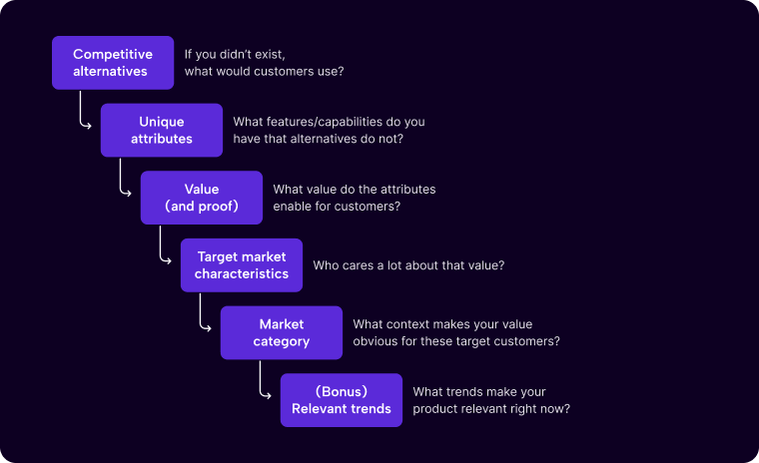Book Review: Obviously Awesome by April Dunford
Positioning is the bane of any tech startup. Complain to founders about a feature, and it will get fixed right away. Do you want better customer support? The whole team will sacrifice their night’s sleep to make sure that customers are satisfied with the support they get. Startups can solve most of their problems by putting in more effort. However, product positioning is not one of them. It is witchcraft to tech founders: They have a general idea of what it is and how it is supposed to be done but can't seem to nail it for some reason.
Chasing the ever-elusive product-market fit
Discussions on “product-market fit” dominate the product team meetings held during the initial stages of a startup. Product-market fit is defined by Gartner as "the milestone in the development of a new product or service when the customer acquisition processes have become repeatable and predictable." The term refers to that particular state of affairs where your company is ready to scale. Once you are there, your business plan starts to work like a well-oiled machine, demand surges, word-of-mouth kicks in, and you hop on the tide that will take you to glory.
It is the dream of every startup founder to achieve the mythical product-market fit as soon as possible. But how do you get there? Even the most acclaimed management gurus have a hard time giving a definite answer to that. "When you find the product-market fit, you will know it," is the standard answer, meaning that it will be impossible to miss once you are there. It is not much of a help for founders trying to chart a route for themselves, though.
In this month’s book review, we are taking a look at Obviously Awesome, written by April Dunford, a business professional with sixteen product launches under her belt over twenty-five years as VP of marketing. Dunford tackles the product positioning problem in the book and has refreshing insights for founders and marketers looking to achieve product-market fit.
How it used to be
Getting the product positioning right is the sine qua non for product-market fit—you don’t get the latter without the former. What should a company do to position its product correctly? The conventional quest for the product-market fit used to start with the formulation of a "positioning statement."
Our product is a (MARKET CATEGORY) that does (UNIQUE ATTRIBUTES), which enable (VALUE) for (TARGET CUSTOMERS), unlike (COMPETITORS).
Once you filled in the blanks, you ended up with a riddle-like statement that was supposed to guide your marketing efforts from that point onwards. But it never worked because it said nothing about how the positioning would be implemented. Therefore, the issue was assigned to a junior marketer, brought up in a marketing meeting for a brief discussion, and then left behind as one of the numerous "feel-good" exercises a startup does early on in its journey, similar to what Dunford experienced as a marketer at IBM.
Challenges of positioning
There is a reason it takes even the most experienced marketers months, even years, to position a product correctly. The process is fraught with challenges. Dunford calls those challenges "traps" and points out two:
- Not realizing that the product you built is not what you intended to build.
- Finding out that the market is no longer the market you designed your product for.
When you are not aware of what you are building and who you are building it for, any attempt at positioning becomes nothing more than shooting in the dark. Getting out of this situation takes a methodical approach, which April Dunford offers us in her book.
A new way forward
Having faced time and again the problem of positioning at every startup she worked for, Dunford felt pressed to devise a technique that could be applied to different environments. She decided to break successful product positioning into five components, plus a bonus one:
- Competitive alternatives
- Unique attributes
- Value
- Target market characteristics
- Market category
- Relevant trends, if there are any
However, identifying the positioning components does not suffice because the components are interdependent. One component interacts with others, making it difficult for a novice to decide where to start. Dunford arranges the positioning components in a flow that guides the practitioners of the framework to success.

Product positioning flow. Image credits: April Dunford, Obviously Awesome. The image was modified to optimize page layout.
This analytical approach is one of the points that set Obviously Awesome apart from similar books: It goes beyond just describing the lay of the land and provides the reader with a road map to help her get to where she wants.
A game of manipulation
Dunford believes that positioning is all about context-setting: It involves changing what your customers think about your product. People see a product as part of a context and later use that context as a frame of reference to decide whether they want the product or not.
Positioning is a way to tinker with this frame of reference and bring your product to the attention of a particular customer group that will make the most use of it. The author calls this group the "best-fit customers." According to her, you should narrow this group down to the point where it is just big enough to allow you to realize your business goals. Forgoing a big portion of the market right from the start may sound counterintuitive to ambitious founders. However, it is the right thing to do as it helps a startup gain traction faster without wasting the already scarce resources to lure customers who will never buy the product. This also ties in nicely with Paul Graham's famous maxim:
“It’s better to have 100 people [who] love you than finding a million who just sort of like you.”
Time to unleash your inner Draper
Having noticed the lack of a product positioning theory in the marketing literature, Dunford has spent time thinking, writing, and talking about positioning, becoming a prolific keynote speaker and a sought-after consultant in the process. The Peaka team was privileged to attend one of her webinars at a ScaleX event on June 30, 2022, and we were dazzled by her communication skills and wit as she talked about one of the more challenging topics in marketing.
Obviously Awesome is the culmination of Dunford's efforts to distill a repeatable process out of her experience. It gives startups an actionable plan to nail positioning once and for all. The book serves as a concise guide for founders and marketing people, helping them understand what positioning is and how to tackle it. Obviously Awesome presents successful product positioning as a sequence of ten steps and provides the readers with relevant real-life examples of companies that managed to turn things around with smart moves. That it is also a very enjoyable read is another plus.
Like Don Draper said to a client during a dinner meeting in a Mad Men episode, “If you don’t like what is being said [about your product], then change the conversation.” April Dunford is showing you how.




 Please
fill out this field
Please
fill out this field









